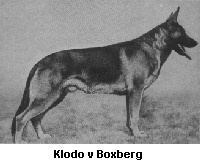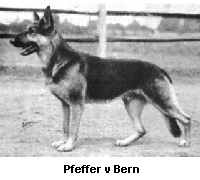
This is a placeholder text
Group text
by SitasMom on 08 February 2009 - 16:02
He lived until the mid 1930's, did he stay active until the very end of his life?
Just wondering........
by Two Moons on 08 February 2009 - 16:02
Surely you can find the answers you desire.
by Beardog on 08 February 2009 - 16:02
by Two Moons on 08 February 2009 - 17:02
by SitasMom on 08 February 2009 - 18:02
by Two Moons on 08 February 2009 - 18:02
I can't believe no one has offered up any links yet.
by SitasMom on 08 February 2009 - 18:02
Stephanitz died in Dresden on the 37th anniversary of the club he and Artur Meyer founded together.[5] The S.V. is still in existence and is headquartered in Augsburg, Germany.
this is WHEN he died, but did he die on the field while judging or quietly at home.........
my question remains,
by Sunsilver on 08 February 2009 - 18:02
by Johntic on 08 February 2009 - 19:02
You are a "BLABBERING IDIOT"!!!!
Why do you take this opportunity to bad-mouth someone...If you can't answer the question then just keep your big mouth shut...David Payne knows more about these GSDogs than you will ever know.
by SitasMom on 08 February 2009 - 19:02
If you guys could stop you petty bickering and look for the answer I would truly appreciate it.
 Von Stephanitz had become alarmed at the trend in the breed toward oversized square dogs. Other problems included lack of steady temperament and faults of dentition. He and the breed wardens decided drastic measures needed to be taken. At the 1925 Sieger show von Stephanitz selected Klodo von Boxberg as world sieger. This dog was dramatically different from the type of dog that had gone before him. He was of lower station, deeper and longer in body, short in loin and with a far-reaching gait. As it turned out Klodo proved to be a potent sire, successfully heralding a "new" type of shepherd. That same year Klodo was imported to America by A. Gilbert of Maraldene Kennels in Hamden, Connecticut. Klodo, through a number of important sons and daughters, is largely responsible for the faults and virtues of modern North American lines.
Von Stephanitz had become alarmed at the trend in the breed toward oversized square dogs. Other problems included lack of steady temperament and faults of dentition. He and the breed wardens decided drastic measures needed to be taken. At the 1925 Sieger show von Stephanitz selected Klodo von Boxberg as world sieger. This dog was dramatically different from the type of dog that had gone before him. He was of lower station, deeper and longer in body, short in loin and with a far-reaching gait. As it turned out Klodo proved to be a potent sire, successfully heralding a "new" type of shepherd. That same year Klodo was imported to America by A. Gilbert of Maraldene Kennels in Hamden, Connecticut. Klodo, through a number of important sons and daughters, is largely responsible for the faults and virtues of modern North American lines. another photo of Klodo v Boxberg
another photo of Klodo v Boxberg In 1936 John Gans imported Sieger Pfeffer von Bern and in 1938 Sidney Heckert Imported Odin vom Busecker Schloss. Through their intense inbreeding and line-breeding, these were dogs that molded the majority of our modern day lines. Pfeffer was German Sieger in 1937 and had a great show career in America. Through Pfeffer a uniform type in America was established but with the faults of long coats, missing dentition, faulty temperament, overlong bodies and loins, and orchidism (missing one or both testicles).
In 1936 John Gans imported Sieger Pfeffer von Bern and in 1938 Sidney Heckert Imported Odin vom Busecker Schloss. Through their intense inbreeding and line-breeding, these were dogs that molded the majority of our modern day lines. Pfeffer was German Sieger in 1937 and had a great show career in America. Through Pfeffer a uniform type in America was established but with the faults of long coats, missing dentition, faulty temperament, overlong bodies and loins, and orchidism (missing one or both testicles).Contact information Disclaimer Privacy Statement Copyright Information Terms of Service Cookie policy ↑ Back to top




